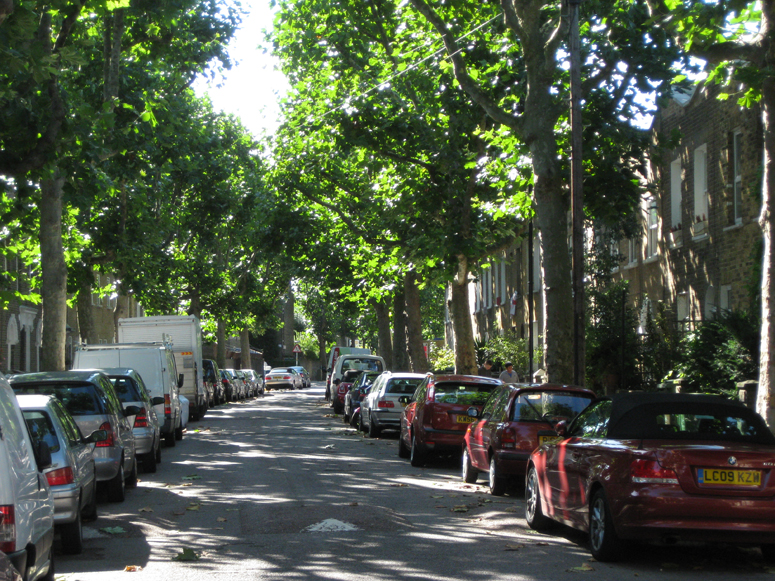The landscape architecture of green streets

Landscape architects and urban designers can green streets and other routes as a contribution to mitigating climate change by undertaking or promoting some or all of the following desiderata:
- plan ecological corridors to promote migration of flora and fauna,
- conserve water, use drought-tolerant plants and change methods of cultivation,
- use shade structures (e.g. roadside trees) to promote human comfort,
- design high albedo (= light reflective) surfaces to combat heat island effects
- plan landscapes for coastal retreat,
- install sustainable urban drainage systems (SUDS)
- plan high density settlements to reduce energy consumption,
- promote the use of renewable energy for transport,
- design urban forestry schemes,
- use good design to promote cycling and walking
- use low embodied carbon materials, (e.g. use flexible paving not paving with a concrete base course)
- minimise the area of paving,
- avoid smooth surfaces with a high thermal conductivity and prefer rough surfaces such as gravel or small unit paving (eg prefer riven stone setts to sawn stone setts)
- change the form of urban development (eg to avoid high rise and urban canyon effects),
- avoid thick pavements with a higher thermal storage capacity: e.g. avoid concrete bases to stone paving,
This list includes ways to limit global warming and ways to ameliorate the effects of such warming (eg planning for river flooding).
There is a Greater London Authority report on London’s Urban Heat Island: A Summary for Decision Makers of October 2006 which relates the energy balance science straightforwardly:
“When a land cover of buildings and roads replaces green space, the thermal, radiative, moisture and aerodynamic properties of the surface and the atmosphere are altered. This is because urban construction materials have different thermal (heat capacity and thermal conductivity) and radiative (reflectivity and emissivity) properties compared to surrounding rural areas, which results in more of the sun’s energy being absorbed and stored in urban compared to rural surfaces. In addition, the height of buildings and the way in which they are arranged affects the rate of escape at night of the sun’s energy absorbed during the day by building materials. The result is that urban areas cool at a much slower rate than rural areas at night, thus maintaining comparatively higher air temperatures. Urban areas also tend to be drier than their rural counterparts because of the lack of green space, a predominance of impervious surfaces and urban drainage systems, which quickly remove water from the urban surface. This combination of effects alters the energy balance of the urban environment. Consequently in urban compared to rural areas, more of the sun’s energy absorbed at the surface goes into heating the atmosphere and thus raising the air temperature than into evapotranspiration (water uptake and loss by plants), which is a cooling process.”
Landscape architects and other urban designers should:
- minimize inputs,
- minimize outputs
- promote energy efficiency= densification, transport, sustainable production
- promote waste efficiency= re-cycling and re-use
- promote food efficiency= local production.
references:
(1) the Dutch National Waterplan is an excellent example of landscape architects being effective at a national scale is (2009)
(2) Michael D. King, Parkinson Claire L., Partington Kim C. and Williams, Robin G. Our Changing Planet, the View from Space. Cambridge University Press:2007
(3) Mathis Wackernagel and William Rees Our Ecological Footprint Gabriola Island, New Society Publishers: 2007
(4) Robert Kunzig and Wallace Broecker Fixing Climate The story of climate science and How to stop global warming London Profile Books Ltd.:2008
(5) Centre for Alternative Technology Zerocarbonbritain2030 Machynlleth, Centre for Alternative Technology Publication: 2010 http://www.zerocarbonbritain.com/
